Buck’s Backyard Mural live on Otocast
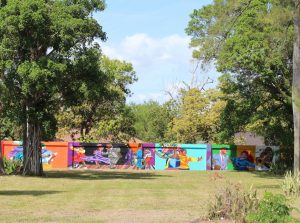 You’re standing in the grassy field next to McCollum Hall. Sunlight illuminates the colorful mural that plays out along the brick wall behind the historic landmark. You surmise that the images tell the story of the music emporium that Clifford “Buck” McCollum and his wife, Gertrude, created there decades ago, but little more. Then, suddenly, local actor and director Sonya
You’re standing in the grassy field next to McCollum Hall. Sunlight illuminates the colorful mural that plays out along the brick wall behind the historic landmark. You surmise that the images tell the story of the music emporium that Clifford “Buck” McCollum and his wife, Gertrude, created there decades ago, but little more. Then, suddenly, local actor and director Sonya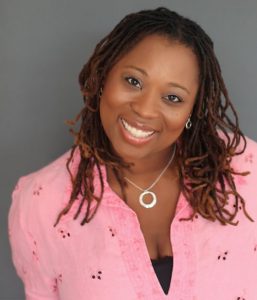 McCarter ambles up and begins to regale you with tales of old, deciphering the meaning of each of the mural’s 23 panels like an archaeologist translating the script chiseled into the Rosetta Stone.
McCarter ambles up and begins to regale you with tales of old, deciphering the meaning of each of the mural’s 23 panels like an archaeologist translating the script chiseled into the Rosetta Stone.
Well Sonya can’t be there whenever you or someone else shows up to walk the mural. But you can have her decipher the mural’s 23 panels anytime and every time you like by simply downloading a free mobile app known as Otocast. McCarter has recorded audio explanations for each panel that you can listen to once or multiple times during your very own self-guided tour of the Buck’s Backyard Mural.
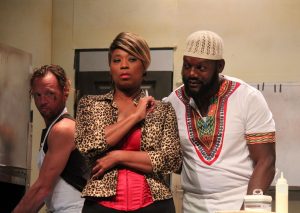 The Fort Myers Community Redevelopment Agency (CRA) and the City’s Public Art Committee (PAC) chose McCarter for this honor for a variety of reasons. She’s a name and voice well-known not only in the Dunbar community where the mural is located, but as a talented actor, director, theater instructor and voiceover artist, she’s known and respected throughout all of Southwest Florida, and
The Fort Myers Community Redevelopment Agency (CRA) and the City’s Public Art Committee (PAC) chose McCarter for this honor for a variety of reasons. She’s a name and voice well-known not only in the Dunbar community where the mural is located, but as a talented actor, director, theater instructor and voiceover artist, she’s known and respected throughout all of Southwest Florida, and 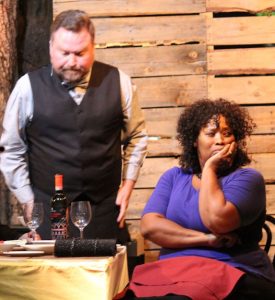 beyond.
beyond.
Sonya’s currently starring in the title role of the Lynn Nottage (a double Pulitzer Prize winning playwright) dark comedy Clyde’s, on stage through August 11th at the Laboratory Theater of Florida. But she has numerous other stage credits to her name, including Marquise de Merteuil in Dangerous Liaisons. Confusions (which consisted of three one-act plays, The Still Alarm by George S. Kauffman and Alan Ayckbourn’s Between Mouthfuls and A Talk in the Park), the part of Camae in Katori Hall’s Mountaintop, 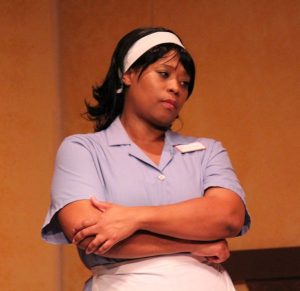 Louise Parker Neese in Steven Dietz’s Rancho Mirage, Corryn Fell in Gideon’s Knot, Ntozake Shange’s choreopoem For Colored Girls Who Have Considered Suicide When the Rainbow is Enuf, and as a grieving mother in the virtual presentation of For Black Women Who Experienced Genocide When The Police Murders of Their Sons Was Too Much by Keith A. Wallace for The Best Seats in Your House.
Louise Parker Neese in Steven Dietz’s Rancho Mirage, Corryn Fell in Gideon’s Knot, Ntozake Shange’s choreopoem For Colored Girls Who Have Considered Suicide When the Rainbow is Enuf, and as a grieving mother in the virtual presentation of For Black Women Who Experienced Genocide When The Police Murders of Their Sons Was Too Much by Keith A. Wallace for The Best Seats in Your House.
Sonya also had appearances in two episodes of the television show Burn Notice and the film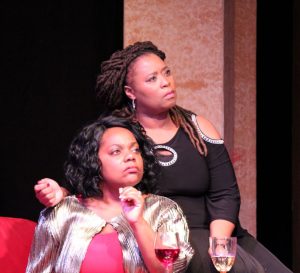 The Florida Project.
The Florida Project.
Sonya’s directing credits include Zora Howard’s Stew for Lab Theater, Radio Golf for Theater Conspiracy, Pass Over for Lab Theater, Dorothy Marcic’s SISTAS: the Musical, Fairview, The Color Purple, Lorraine Hansberry’s A Raisin in the Sun, August Wilson’s The Piano Lesson, King Hedley II, Seven Guitars, Joe Turner’s Come and Gone, and Ma Rainey’s Black Bottom, Lydia Diamond’s The Bluest Eye and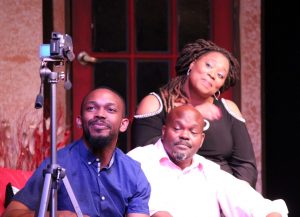 George C. Wolff’s The Colored Museum.
George C. Wolff’s The Colored Museum.
McCarter studied theater and the language of Shakespeare at Pensacola Christian College 1990-1995. She holds two Master’s Degrees in Oral Interpretation of Speech and Theatre Arts. Her heart’s passion is to help facilitate engaging, compelling and meaningful theatre in Fort Myers that features 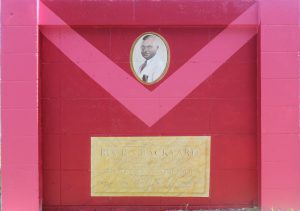 strong African-American characters and stories.
strong African-American characters and stories.
The Buck’s Backyard Mural tells stories centered around McCollum Hall, which became the heart of Dunbar in 1938 when entrepreneur Clifford “Buck” McCollum, Sr., and his wife, Gertrude, opened a much-needed commercial and recreational space at the intersection of Anderson Avenue and Cranford Street. The 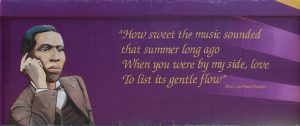 mural is a collaboration by and between the CRA, PAC and Fort Myers Mural Society. FMMS members Erik Schlake, JP Almonacid and Roland Ruocco combined forces to paint the 23 panels that tell the story of McCollum
mural is a collaboration by and between the CRA, PAC and Fort Myers Mural Society. FMMS members Erik Schlake, JP Almonacid and Roland Ruocco combined forces to paint the 23 panels that tell the story of McCollum 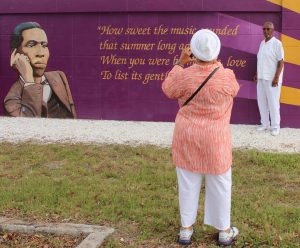 Hall.
Hall.
When he built McCollum Hall in 1938, Buck opened a liquor store in one of the building’s ground floor rental spaces and leased the other units to a shoe store, clothier, barber shop, coffee house and grocery store.
While each business establishment drew customers on a daily basis, it was the upstairs dance hall that energized the community and contributed to Dunbar’s  social standing. This was the era of segregation, and entertainers of color were denied access to white establishments. So they performed in clubs, juke joints and theaters in African-American
social standing. This was the era of segregation, and entertainers of color were denied access to white establishments. So they performed in clubs, juke joints and theaters in African-American 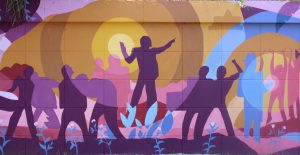 neighborhoods just like Dunbar that came to be known as the Chitlin’ Circuit.
neighborhoods just like Dunbar that came to be known as the Chitlin’ Circuit.
The Chitlin’ Circuit took its name from cast-off pork parts – hog intestines that were boiled and then fried. But there was nothing cast-off about the music patrons heard inside Chitlin’ Circuit stops. Venues 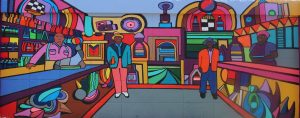 like McCollum Hall became the incubators of some of this country’s greatest blues, jazz and rock-and-roll musicians.
like McCollum Hall became the incubators of some of this country’s greatest blues, jazz and rock-and-roll musicians.
Count Basie, Louis Armstrong, B.B. King, Lionel Hampton,  Otis Redding, Lucky Milliner and Duke Ellington and his orchestra were among the Black musicians who performed at McCollum Hall. But James Brown, Little Richard, Ray Charles, Wilson Pickett,
Otis Redding, Lucky Milliner and Duke Ellington and his orchestra were among the Black musicians who performed at McCollum Hall. But James Brown, Little Richard, Ray Charles, Wilson Pickett, 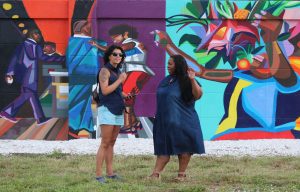 Muddy Waters, Fats Domino, Marvin Gaye, Billie Holiday, Aretha Franklin, Ella Fitzgerald, Tina Turner, Sam Cooke, the Isley Brothers and even Jimi Hendrix all got their start, honed their performance skills and developed their unique sounds and flamboyant personas on the Chitlin’ Circuit.
Muddy Waters, Fats Domino, Marvin Gaye, Billie Holiday, Aretha Franklin, Ella Fitzgerald, Tina Turner, Sam Cooke, the Isley Brothers and even Jimi Hendrix all got their start, honed their performance skills and developed their unique sounds and flamboyant personas on the Chitlin’ Circuit.
And as 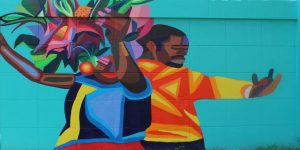 the rhythm sections of the bands and orchestras that toured with these and other Black musicians began insinuating gospel backbeat into their performances, the circuit eventually, inexorably, gave birth to a brand new genre of music – soul.
the rhythm sections of the bands and orchestras that toured with these and other Black musicians began insinuating gospel backbeat into their performances, the circuit eventually, inexorably, gave birth to a brand new genre of music – soul.
The Buck’s Backyard 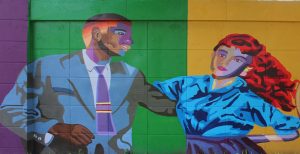 mural tells these and other stories related to McCollum Hall.
mural tells these and other stories related to McCollum Hall.
A Guidebook edited by Dunbar historians Jarrett Eady, Lodovic Kimble and Charles Barnes shares and amplifies the historical research conducted by artists Erik Schlake, JP Almonacid and Roland Ruocco. 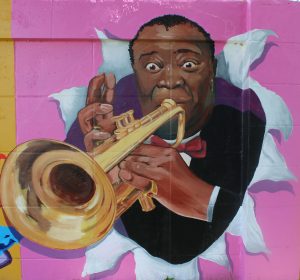 The Otocast audios that McCarter recorded are based on the information contained in the Guidebook. After all, it’s so much easier to listen to a seasoned voiceover artist explain the mural on your phone than it is to read a guidebook while you’re walking down the wall that houses the paintings.
The Otocast audios that McCarter recorded are based on the information contained in the Guidebook. After all, it’s so much easier to listen to a seasoned voiceover artist explain the mural on your phone than it is to read a guidebook while you’re walking down the wall that houses the paintings.
Of course, Otocast also contains some text along with the historic photos the artists referenced in the paintings they rendered as part of the mural project. 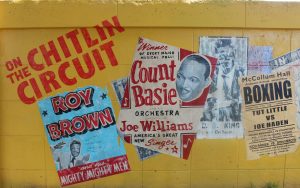 Otocast also contains text, photos and audios for all of the City of Fort Myers’ other outdoor artworks along with more than two dozen of its historic buildings.
Otocast also contains text, photos and audios for all of the City of Fort Myers’ other outdoor artworks along with more than two dozen of its historic buildings.
Go here to access the “Fort Myers Guide” on Otocast.
When you go there, you will land on a map of the 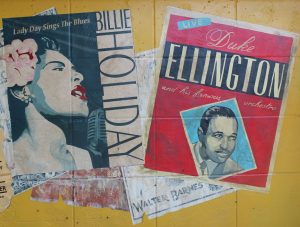 City of Fort Myers.
City of Fort Myers.
Click on the bright yellow pin, and photos of the Buck’s Backyard mural panels will appear in the scroll at the bottom of the page.
Right click on a photo and text will appear that provides background information about that panel. Click on “Gallery” to see photographs of the panel 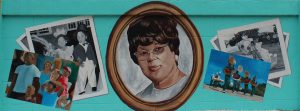 and the historical images on which it is based. And click on the round white circle at the very bottom to hear the accompanying audio.
and the historical images on which it is based. And click on the round white circle at the very bottom to hear the accompanying audio.
If you are new to Otocast, the app is free and available 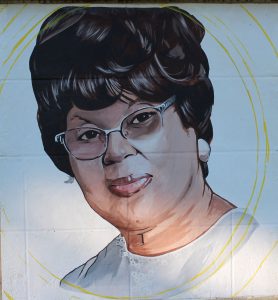 for download in your phone’s app store and on Google Play. Otocast works through geo-location mapping. Users don’t need to know anything about an artwork or historic building they happen upon. There’s no need to look for a plaque or QR Code. Simply tap on the app and the guide automatically comes up, providing access to an array of information not only about Buck’s Backyard, but the City’s other public artworks and historic points of interest.
for download in your phone’s app store and on Google Play. Otocast works through geo-location mapping. Users don’t need to know anything about an artwork or historic building they happen upon. There’s no need to look for a plaque or QR Code. Simply tap on the app and the guide automatically comes up, providing access to an array of information not only about Buck’s Backyard, but the City’s other public artworks and historic points of interest.
In addition to 25 historic points of interest, the Fort Myers Guide also contains narrative, photos and audios for an additional  49 murals and 30 other artworks scattered about town.
49 murals and 30 other artworks scattered about town.
By virtue of its audio component, Otocast is like having your very own tour guide who knows all the facts, figures 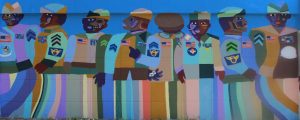 and inside stories about the artworks and historic buildings you see. In fact, in the other towns and cities where Otocast is already in use the app serves as a platform for self-guided audio tours that encourage exploration and discovery, helping people
and inside stories about the artworks and historic buildings you see. In fact, in the other towns and cities where Otocast is already in use the app serves as a platform for self-guided audio tours that encourage exploration and discovery, helping people 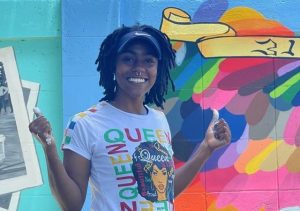 gain a better appreciation of their cultural legacy. This feature is particularly useful in a town like Fort Myers, where many of the century-old buildings and pieces in the city’s public art collection encapsulate tales about the pioneers who built a rough-and-tumble cow town out of the remnants of an old wooden frontier outpost in the years following the end of the Civil
gain a better appreciation of their cultural legacy. This feature is particularly useful in a town like Fort Myers, where many of the century-old buildings and pieces in the city’s public art collection encapsulate tales about the pioneers who built a rough-and-tumble cow town out of the remnants of an old wooden frontier outpost in the years following the end of the Civil 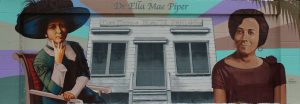 War.
War.
Otocast currently hosts guides containing in excess of 4,500 points of interest in more than 200 cities in 90+ countries.
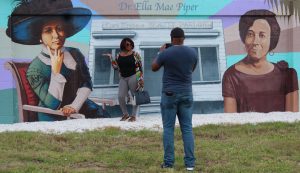 July 27, 2024.
July 27, 2024.
RELATED POSTS
- Fort Myers adds historic points of interest to Otocast mobile phone app
- Discover the history of the Murphy-Burroughs Home on Otocast
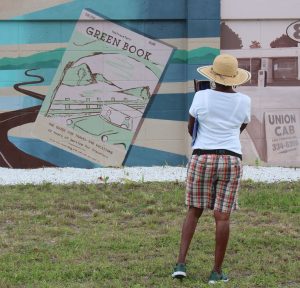 Text, photos and audio for Casa Rio now on Otocast
Text, photos and audio for Casa Rio now on Otocast- Text, photos and audio for Dean Hotel now on Otocast
- Text, photos and audio for First National Bank building on Otocast
- Text, photos and audio for Heitman-Evans Hardware Store on Otocast
- Text, photos and audio for Kress Building added to Otocast














 Tom Hall is both an amateur artist and aspiring novelist who writes art quest thrillers. He is in the final stages of completing his debut novel titled "Art Detective," a story that fictionalizes the discovery of the fabled billion-dollar Impressionist collection of Parisian art dealer Josse Bernheim-Jeune, thought by many to have perished during World War II when the collection's hiding place, Castle de Rastignac in southern France, was destroyed by the Wehrmacht in reprisal for attacks made by members of the Resistance operating in the area. A former tax attorney, Tom holds a bachelor's degree as well as both a juris doctorate and masters of laws in taxation from the University of Florida. Tom lives in Estero, Florida with his fiancee, Connie, and their four cats.
Tom Hall is both an amateur artist and aspiring novelist who writes art quest thrillers. He is in the final stages of completing his debut novel titled "Art Detective," a story that fictionalizes the discovery of the fabled billion-dollar Impressionist collection of Parisian art dealer Josse Bernheim-Jeune, thought by many to have perished during World War II when the collection's hiding place, Castle de Rastignac in southern France, was destroyed by the Wehrmacht in reprisal for attacks made by members of the Resistance operating in the area. A former tax attorney, Tom holds a bachelor's degree as well as both a juris doctorate and masters of laws in taxation from the University of Florida. Tom lives in Estero, Florida with his fiancee, Connie, and their four cats.